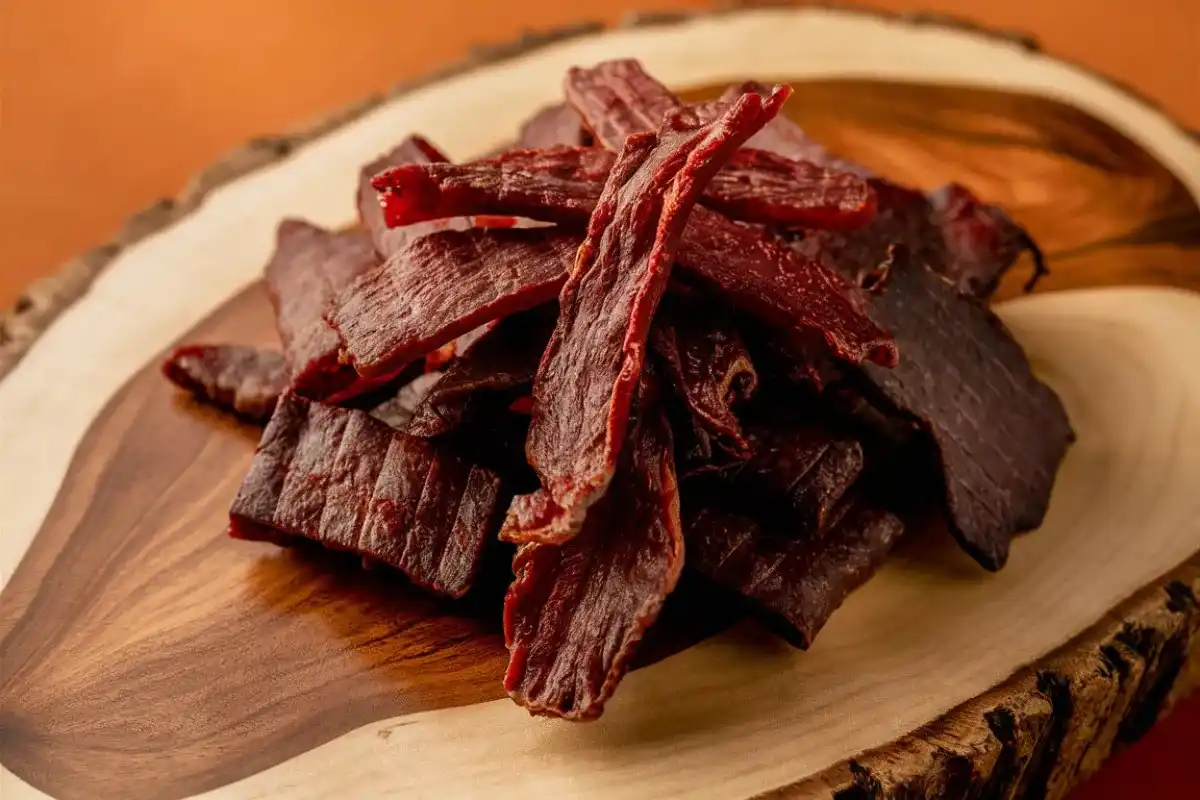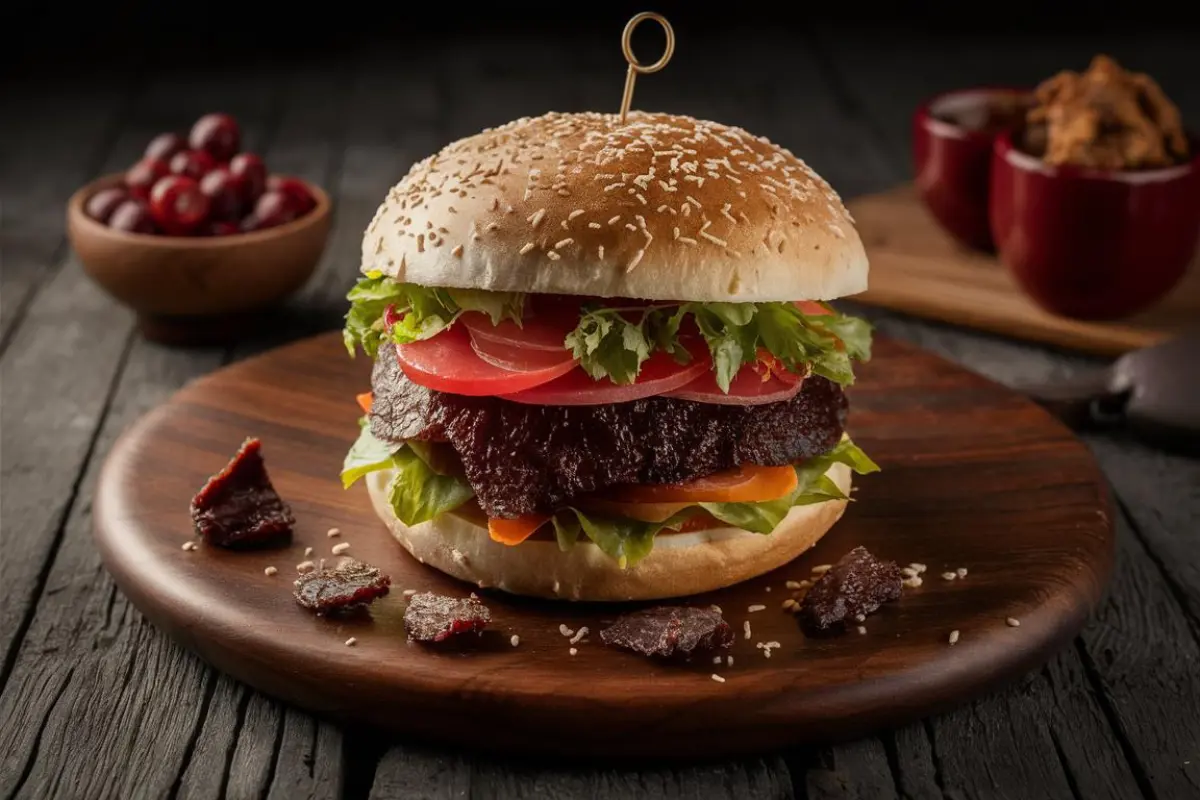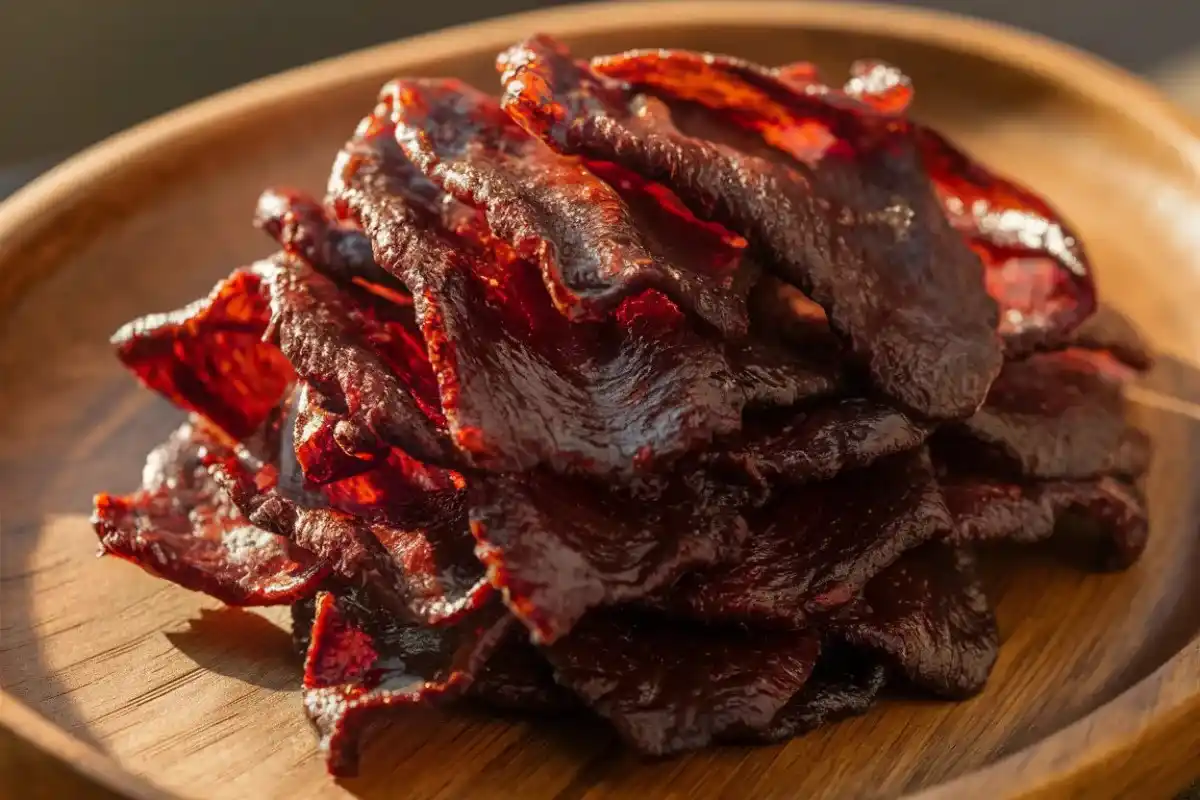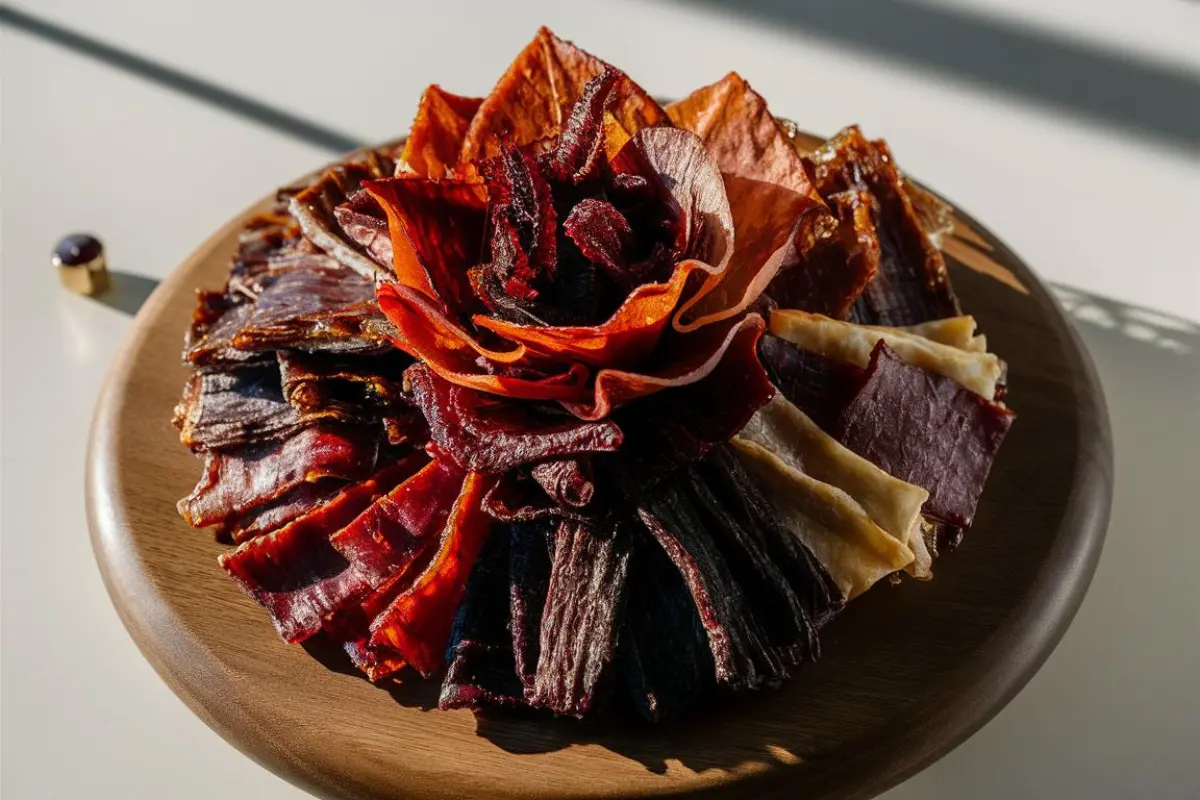Jerky has become a popular snack for many, known for its rich flavor, high protein content, and convenience. However, consumers often wonder why this seemingly simple snack carries such a hefty price tag. This article delves into the various factors that contribute to the high cost of jerky, providing a comprehensive understanding of why it is more expensive than other snacks.
Why Is Jerky So Expensive? A Look at the Historical Context
Jerky has a long history, dating back to ancient civilizations that needed to preserve meat for long periods. Ancient peoples dried meat to ensure it could be stored and consumed later, particularly during times when fresh food was scarce. While methods have evolved over time, the basic principle remains the same: removing moisture from the meat extends its shelf life.
Today, jerky has transformed from a survival food to a gourmet snack, with a focus on quality and flavor. Understanding jerky’s historical context helps explain why it is often considered a premium product, justifying its higher cost.
Premium Quality Beef: A Major Reason Why Jerky Is Expensive

One of the primary reasons jerky costs so much lies in the high-quality beef used in its production. Unlike many other snacks that use lower-quality ingredients or fillers, jerky relies on premium cuts of meat. This is especially true for artisanal jerky makers who prioritize lean, high-grade beef. The choice of beef is critical because it directly affects the final product’s texture and taste.
For instance, jerky producers often select lean cuts, such as top round or sirloin, which have less fat and produce a better texture when dried. These cuts are more expensive than other types of meat but are essential for making high-quality jerky. Furthermore, the production of jerky is incredibly inefficient in terms of raw material usage. It takes about 2.5 pounds of fresh beef to produce just 1 pound of jerky. This significant reduction in weight results from the dehydration process, which removes the water content from the meat.
For more on the choice of meat in other recipes, check out how it influences dishes like Ground Beef Recipes.
Dehydration Process: How It Affects Jerky Costs
The dehydration process is another significant factor that drives up the cost of jerky. Beef contains about 60% water, which must be removed to produce jerky. This dehydration process not only reduces the weight of the beef but also concentrates its flavor, making jerky a rich and savory snack. However, this reduction in weight means that much of the original beef mass is lost while the cost remains based on the initial amount of meat used.
The result is that the price per pound of jerky is much higher than the price per pound of raw beef. For example, if a jerky producer starts with 2.5 pounds of beef and ends up with 1 pound of jerky, the price of the jerky must cover the cost of the original 2.5 pounds of beef, as well as the production costs.
Labor-Intensive Production: Another Factor in Jerky’s High Price
Jerky production involves a labor-intensive process that requires skilled workers to ensure a high-quality product. From selecting the right cuts of beef to marinating, seasoning, and finally dehydrating, each step demands careful attention to detail. Small-batch or artisanal jerky producers often use traditional methods, which are more time-consuming but result in a superior product. The marinating process alone can take several hours or even days, depending on the recipe.
Even in larger-scale operations where some steps might be automated, significant human oversight is still involved. Ensuring that each batch of jerky meets quality standards requires a skilled workforce. Workers monitor the drying process, check the consistency of the product, and package the final jerky—all of which contribute to labor costs.
Beyond Beef: The Role of Ingredients in Jerky’s Expensive Price
While beef is the main ingredient in jerky, the cost doesn’t stop there. High-quality jerky also includes premium ingredients such as spices, marinades, and sometimes even sweeteners like honey or maple syrup. These ingredients, particularly when sourced from sustainable or organic farms, add significantly to the overall cost of production.
For example, some jerky producers use exotic or high-end spices to create unique flavor profiles, which can be quite expensive. Additionally, many premium jerky brands avoid artificial preservatives and additives, opting instead for natural ingredients to ensure a clean label. This choice aligns with consumer demand for healthier, more natural products, but it also drives up the price.
For more insights on how ingredients impact flavor and cost in other foods, consider reading What Taco Shells Are Made Of.
Packaging and Shelf Stability: Why Jerky Costs More

Packaging plays a crucial role in jerky’s cost. Unlike many other snacks, jerky requires special packaging to maintain its freshness and extend its shelf life. This packaging often includes vacuum sealing or the use of oxygen absorbers to prevent spoilage and maintain the jerky’s texture and flavor.
The materials used for packaging jerky cost more than those used for other snacks. For example, the bags must be made from durable materials that can withstand transportation and handling without tearing or puncturing. Additionally, the packaging needs to protect the product from moisture, light, and air—all of which can degrade the quality of the jerky.
Another important aspect of packaging is branding. Premium jerky brands often invest in high-quality packaging that reflects the brand’s image and appeals to consumers. This investment in branding and packaging is another reason why jerky can be more expensive than other snacks.
Moreover, the packaging process itself involves labor-intensive work and requires careful attention to detail. Workers ensure that each package is properly sealed and labeled, and that the jerky inside is of the highest quality. This attention to detail is another factor that contributes to the higher cost of jerky.
Supply Chain and Distribution: Driving Up the Cost of Jerky
The supply chain and distribution networks involved in getting jerky from the producer to the consumer also contribute to its high cost. From sourcing the beef to getting the finished product onto store shelves, each step in the supply chain incurs costs that are passed on to the consumer.
One of the most significant costs is transportation. Jerky producers often source beef from specific regions or suppliers, which may be located far from the production facility. Transporting this beef, especially when sourced from premium or organic farms, can be costly. Additionally, the finished product must be transported to distribution centers and then to retail stores, further adding to the cost.
Storage also plays an important role. Jerky must be stored in conditions that maintain its freshness and prevent spoilage. This often means using temperature-controlled storage facilities, which cost more than standard warehouses. The cost of storage is passed on to the consumer in the form of higher prices.
Retail markups also influence the cost of jerky. Retailers typically add a markup to the wholesale price to cover their own costs and generate profit. This markup can vary depending on the retailer but typically ranges from 20% to 50% of the wholesale price. As a result, the final price of jerky on store shelves is significantly higher than the cost of production.
Supply chain disruptions, such as those caused by global events like the COVID-19 pandemic, also impact jerky costs. Disruptions in the supply of beef or transportation delays often lead to higher prices. These increased costs are passed on to the consumer, resulting in higher prices at the retail level.
Perceived Value and Branding: Why Premium Jerky Is More Expensive
Branding significantly influences jerky costs. Premium jerky brands often position their products as gourmet or artisanal, allowing them to charge higher prices. Consumers are willing to pay more for jerky perceived as high-quality, even if similar products are available at a lower price.
Brands build perceived value through marketing efforts that emphasize the use of high-quality ingredients, small-batch production, and ethical sourcing. These factors create a sense of exclusivity and justify the higher price tag. For example, a brand that highlights its use of organic, grass-fed beef or unique flavor profiles may attract consumers who are willing to pay a premium for these qualities.
In addition to marketing, the packaging and presentation of the product play a role in its perceived value. As mentioned earlier, premium jerky brands often invest in high-quality packaging that reflects the brand’s image and appeals to consumers. This investment in branding and packaging is another reason why jerky can be more expensive than other snacks.
Moreover, the reputation of the brand can also influence the price. Established brands with a loyal customer base can charge higher prices because consumers trust the quality of their products. Newer brands may have to price their products more competitively to attract customers, but as they build a reputation for quality, they can gradually increase their prices.
Economic Factors: Inflation and Beef Prices Impacting Jerky Costs

Various economic factors, including inflation, supply chain issues, and changes in consumer demand, cause fluctuations in beef prices. When beef prices rise, the cost of producing jerky also increases, which is reflected in the final price of the product.
Inflation significantly affects jerky costs. As the cost of goods and services increases, so does the cost of beef and other ingredients used in jerky production. These increased production costs are passed on to consumers in the form of higher prices.
In addition to inflation, supply chain issues also impact jerky prices. For example, disruptions in the beef supply, such as those caused by droughts or disease outbreaks, can lead to higher beef prices. These increased costs are then passed on to consumers, resulting in higher prices for jerky.
Changes in consumer demand also influence jerky prices. For example, a surge in demand for high-protein snacks can lead to increased competition for beef, driving up prices. Similarly, changes in consumer preferences, such as a shift towards organic or grass-fed beef, can also impact the cost of producing jerky.
The Future of Jerky Pricing: Will It Always Be This Expensive?
Looking ahead, the price of jerky is likely to remain high due to the factors discussed above. However, a few trends could influence future pricing. One trend is the increasing popularity of alternative meats, such as plant-based jerky or exotic meat jerky made from bison, venison, or even salmon. These products often command a premium price due to their unique ingredients and niche appeal. However, as these products become more mainstream, their prices may become more competitive with traditional beef jerky.
Another trend is the growing demand for sustainability and ethical sourcing. As consumers become more aware of the environmental impact of beef production, they may be willing to pay more for jerky made from sustainably sourced or grass-fed beef. This could lead to higher prices for premium jerky brands that emphasize these qualities.
Finally, advances in technology could also impact jerky prices. For example, improvements in dehydration technology could make the production process more efficient, potentially reducing costs. Similarly, innovations in packaging could extend jerky’s shelf life without needing expensive packaging materials, which could also lower costs.
Frequently Asked Questions (FAQs)
Q: Why is jerky so expensive compared to other snacks?
A: Jerky is expensive due to the use of premium beef, the labor-intensive dehydration process, and the high costs of ingredients and packaging.
Q: Does making jerky at home save money?
A: While you can save some money by making jerky at home, the process requires time, equipment, and access to quality ingredients, which may offset the savings.
Q: What factors make jerky pricing so high?
A: Factors like the cost of high-quality beef, labor, and packaging, as well as supply chain and distribution costs, contribute to jerky’s high price.
Q: How long does store-bought jerky last?
A: Properly packaged jerky can last several months if stored in a cool, dry place, thanks to vacuum-sealing and oxygen absorbers.
Q: Will the price of jerky go down in the future?
A: The price of jerky may remain high due to ongoing factors like beef costs and consumer demand for premium products, though technological advances could influence future pricing.
Conclusion
Jerky is an expensive snack, and for good reason. The high cost of quality beef, the labor-intensive production process, the sophisticated packaging, and the various economic factors all contribute to its price. While it may seem pricey compared to other snacks, the quality, craftsmanship, and flavor of jerky often justify the cost for consumers.
For those who appreciate the rich, savory taste of jerky and are willing to pay for quality, it’s a snack that’s well worth the investment. As the market for premium snacks continues to grow, it’s likely that jerky will remain a popular, albeit expensive, choice for many.
If you’re interested in exploring more about jerky, you might also like this recipe for Beef Jerky.

